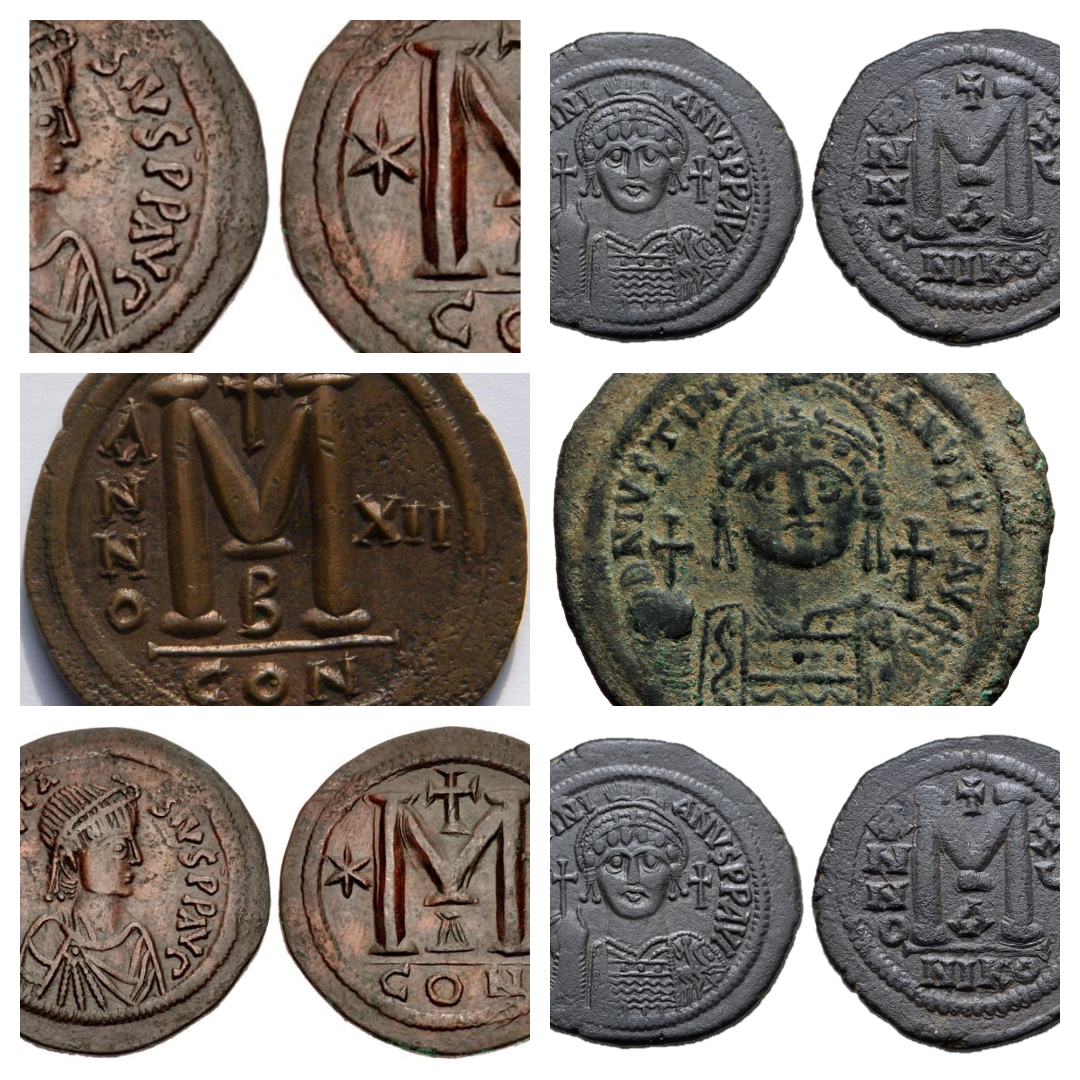The Complete Guide to Byzantine Emperors and Their Coins
When people talk about empires that lasted over a thousand years, there’s really only one that comes to mind — the Byzantine Empire. From 330 AD to 1453, it was ruled by 94 emperors, beginning with Constantine the Great and ending with Constantine XI, who fell defending Constantinople. But the story of this empire isn’t just written in books. It’s written in metal — in the coins they left behind.
Byzantine coins weren’t just used to buy bread or pay soldiers. They were miniature portraits of power, faith, and the times. Each one tells a piece of a bigger story. So, whether you’re a collector, a history buff, or someone who just appreciates old things with meaning, here’s a walk through the emperors of Byzantium and the coins that carried their legacy.
🏛 Constantinian Dynasty (306–363)
Constantine I the Great (306–337)
Coin: Gold solidus
Legend: “CONSTANTINUS MAX AVG”
Notes: You’ll find him dressed in military armor, often with Victory standing beside him — a not-so-subtle way of saying, “I won, and I rule.”
Constantine II (337–340)
Coin: Bronze centenionalis
Legend: “DN CONSTANTINUS IVN NOB C”
Notes: A youthful bust, paired with soldiers on the reverse. Still in dad’s shadow.
Constans (337–350)
Coin: Gold solidus
Legend: “DN CONSTANS PF AVG”
Notes: Features a well-detailed bust and a classic symbol of Victory holding a globe.
Constantius II (337–361)
Coin: Gold solidus
Legend: “DN CONSTAN-TIVS PF AVG”
Notes: Known for coins with early Christian symbols like the Chi-Rho.
Julian the Apostate (361–363)
Coin: Gold solidus
Legend: “FL CL IVLIANVS PP AVG”
Notes: Took a sharp turn back toward paganism. You’ll see Sol Invictus or Jupiter instead of Christian imagery.
👑 Valentinian Dynasty (364–392)
Jovian (363–364)
Coin: Gold solidus
Legend: “DN IOVIANUS PF AVG”
Notes: Traditional military bust with Victory on a globe. A short reign, but still minted.
Valentinian I (364–375)
Coin: Gold solidus
Legend: “DN VALENTINIANVS PF AVG”
Notes: Strong soldier-emperor vibes — labarum, shield, the works.
Valens (364–378)
Coin: Gold solidus
Legend: “DN VALENS PF AVG”
Notes: Helmeted and ready for war. Victory makes a repeat appearance.
Gratian (367–383)
Coin: Gold solidus
Legend: “DN GRATIANVS AVG”
Notes: You’ll often find crosses here — the Christian message was growing strong.
Valentinian II (375–392)
Coin: Gold solidus
Legend: “DN VALENTINIANVS IVN PF AVG”
Notes: Child-emperor coins often look a bit idealized. His shows Victory enthroned.
✝️ Theodosian Dynasty (379–457)
Theodosius I (379–395)
Coin: Gold solidus
Legend: “DN THEODOSIVS PF AVG”
Notes: Diademed bust; Victory seated — a recurring favorite.
Arcadius (395–408)
Coin: Gold solidus
Legend: “DN ARCADIVS PF AVG”
Notes: Younger son of Theodosius. Roma appears enthroned on the reverse.
Honorius (393–423)
Coin: Gold solidus
Legend: “DN HONORIVS PF AVG”
Notes: Emphasizes Christian rule. You’ll see crosses and angels.
Theodosius II (408–450)
Coin: Gold solidus
Legend: “DN THEODOSIVS PF AVG”
Notes: Features scholarly portraits and Christogram imagery.
Marcian (450–457)
Coin: Gold solidus
Legend: “DN MARCIANVS PF AVG”
Notes: Victory again, holding a globe and scepter. A consistent imperial theme.
⚔️ The Rarest Coin
The most elusive coin in the entire Byzantine series? That honor goes to the gold solidus of Constantine XI, struck during the final hours of the empire in 1453. With Constantinople under siege, only a tiny number of these were minted — and today, they’re nearly impossible to find. If you ever come across one? Consider yourself holding the last breath of Byzantium in your hand.
Final Thoughts
Byzantine coins weren’t just money — they were miniature propaganda tools, devotional objects, and markers of legacy. From Constantine the Great’s martial pose to Christ enthroned on Basil II’s coins, each tells you something about who held power, what they believed, and what message they wanted to send.
For collectors, these coins offer more than just historical value — they offer connection. A connection to emperors, battles, reforms, and a civilization that refused to be forgotten.
Keep collecting. Keep exploring. Because every coin has a story — and Byzantium left behind one of the richest collections of all.
